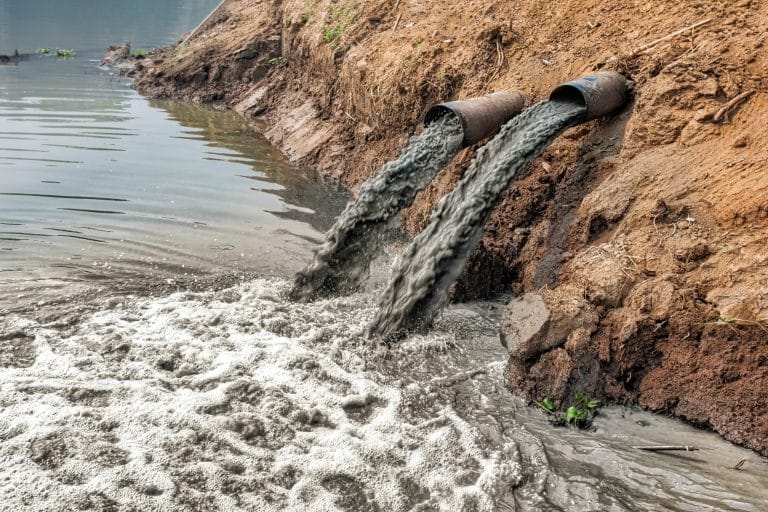
In tough environments where fluid movement is essential, pump performance and lifespan are directly influenced by water quality. Whether in construction, mining, or wastewater management, knowing how water conditions affect reliability is key to long-term success.
Choosing the right pump for specific water types—such as salt water, freshwater, or contaminated water—ensures efficient operation, lowers maintenance needs, and extends service life. Using materials that aren’t suited to the water can lead to corrosion, clogging, and early failure.
With decades of experience, Tsurumi pumps provide durable, high-performance solutions built for harsh and variable conditions. Engineered for reliability, their pumps help maintain productivity and protect your investment, no matter the water quality.
Why Water Quality Matters for Pump Reliability
Water quality plays a critical role in determining how reliably a pump will perform over time. Impurities and corrosive elements in the water can lead to significant wear and tear on internal & external components, impacting efficiency and durability.
How Water Affects Pump Components
When pumps operate in poor-quality water, they are exposed to conditions that accelerate corrosion, erosion, and clogging. These issues can damage key parts like impellers, seals, motors, and casings, reducing performance and increasing the likelihood of mechanical failure.
The Role of Material Selection
Selecting pump materials that are chemically compatible with the fluid being handled is essential. Corrosion-resistant materials, such as stainless steel and advanced composites, are better suited for aggressive or contaminated water, helping prevent premature wear.
Lifespan, Downtime, and Repair Costs
Poor water quality can drastically shorten the operational life of a pump. This leads to more frequent breakdowns, unexpected downtime, and higher maintenance and replacement costs—making material and design choices vital for long-term value.
Common Water Types and Their Effects on Pumps
#1 Saltwater / Seawater
Submersible pumps used in saltwater environments face some of the harshest operating conditions, where high salinity can rapidly degrade components if not properly managed.
Key Issues
- Salt accelerates corrosion, especially on exposed metal surfaces
- Impellers, seals, and other internal parts wear down more quickly
- Cast iron components are particularly vulnerable and rust at a faster rate
Material Recommendations
- Choose stainless steel pumps for enhanced corrosion-resistance
- Ensure the protective chromium oxide layer on stainless steel is preserved to maintain durability
#2 Freshwater
Freshwater may appear less aggressive than other water types, but it still presents challenges that can impact pump efficiency and maintenance if not properly addressed.
Challenges in Freshwater Conditions
- Neutral pH causes slower corrosion, but long-term exposure can still affect metal components
- Debris such as leaves, sand, or sediment can clog the pump intake
- Algae buildup can reduce flow and strain the system
Recommended Maintenance Practices
- Regularly clean pump intake to minimise blockages and maintain flow
- Use screens or strainers to filter out debris and protect internal components
#3 Contaminated Water
Contaminated water—often found in industrial, construction, or mining settings—can contain a mix of chemicals, oils, sediments, and solid debris.
These impurities can significantly affect pump performance by accelerating wear and compromising the integrity of key components, especially when the wrong materials are used.
Challenges in Contaminated Water Conditions
- Particles such as sand, silt, or debris can clog suction covers, strainers, and internal pathways
- Abrasive materials cause excessive wear on impellers and pump casings
- Oil exposure can degrade elastomers, leading to failures in gaskets, o-rings, and cable seals
- Chemicals may cause corrosion or erosion, depending on their composition and concentration
Recommended Maintenance and Material Considerations
To maintain performance in contaminated water applications, it’s essential to select pumps designed with abrasion and chemical-resistant materials, such as reinforced elastomers and corrosion-resistant alloys.
Regular inspections help detect early signs of wear, while proper flushing and cleaning routines prevent buildup and keep the pump operating efficiently.
#4 Acidic Water
Pumping acidic water presents serious challenges due to its corrosive nature. Even at low concentrations, acidic fluids can rapidly deteriorate internal pump components, especially metal surfaces and sealing elements.
If the right materials aren’t used, this can result in system failures, leaks, and costly downtime.
How Acidity Harms Pumps
- Corrodes critical parts such as seals, shafts, impellers, and casings
- Damages internal motor components, including bearings and windings
- Increases the likelihood of leaks and premature pump failure
Choosing the Right Pump
For acidic environments, it’s vital to select pumps specifically engineered to resist corrosion. Stainless steel or other corrosion-resistant materials are ideal, especially when paired with seals and gaskets designed for low-pH compatibility.
These features help maintain performance and extend service life under highly corrosive conditions.
How to Select the Right Pump Based on Water Quality
 Selecting the right pump starts with understanding the specific water conditions it will face. Each water type—whether acidic, saline, or contaminated—affects pump materials and performance differently.
Selecting the right pump starts with understanding the specific water conditions it will face. Each water type—whether acidic, saline, or contaminated—affects pump materials and performance differently.
Making an informed choice helps prevent premature wear, reduce maintenance, and maximise efficiency over time.
Assessing Water Quality
Before choosing a pump, it’s essential to analyse the water for factors like salinity, pH levels, hardness, and the presence of contaminants such as chemicals or debris. Identifying the type of water being handled allows you to select materials and designs that will perform reliably under those conditions.
Matching Pump Materials to Water Conditions
Pumps exposed to acidic or salty water should be constructed from corrosion-resistant materials like stainless steel. For environments with chemical exposure or oil contamination, composite materials and specialised elastomers offer added protection.
In applications with clean, neutral water, standard pump materials may be sufficient, though debris and other physical factors should still be considered.
Consult with Experts
Choosing the most suitable pump for your specific application can be complex, especially in demanding or variable environments. Speaking with pump specialists ensures you get expert recommendations tailored to your needs.
Tsurumi offers in-depth guidance and proven solutions for managing water quality challenges effectively and reliably.
Maintenance Practices That Extend Pump Life
Proper maintenance is essential to keep pumps operating efficiently, especially in challenging water conditions. Regular upkeep not only extends the service life of the equipment but also helps prevent costly breakdowns and unexpected downtime. A proactive approach ensures long-term reliability and consistent performance.
Routine Inspections
Consistent inspections allow for the early detection of issues before they escalate. Checking for signs of corrosion, leaks, and blockages can help avoid damage to vital components.
Key areas such as impeller, seals, and motor housing should be closely examined to ensure they remain in good condition.
Cleaning and Flushing
Build-up of sediment, algae, or other contaminants can compromise pump efficiency and increase wear. Regular cleaning helps remove fouling that may obstruct flow or damage internal parts.
In applications involving seawater or contaminated liquids, flushing the system after use is critical to prevent corrosion and residue accumulation.
Early Intervention
Addressing minor issues early prevents them from developing into major failures. Establishing a routine service schedule—including inspections, cleanings, and part replacements—keeps pumps running at peak performance and reduces the likelihood of emergency repairs or downtime.
How Tsurumi Pumps Are Designed for Challenging Water Conditions
 Tsurumi pumps are engineered to perform reliably in some of the most demanding water conditions found across various industries. With a strong focus on durability and innovation, Tsurumi’s design approach ensures long-lasting pump operation, even in corrosive, abrasive, or debris-heavy environments.
Tsurumi pumps are engineered to perform reliably in some of the most demanding water conditions found across various industries. With a strong focus on durability and innovation, Tsurumi’s design approach ensures long-lasting pump operation, even in corrosive, abrasive, or debris-heavy environments.
Engineering with Corrosion Resistance in Mind
Tsurumi pumps are constructed from high-quality materials selected for their strength and resistance to environmental stress. Corrosion-resistant alloys, such as 316 stainless steel, are commonly used, and protective coatings are applied to critical components.
Each design element—from seal construction to impeller geometry—is carefully developed to withstand the wear caused by harsh fluids and aggressive contaminants.
Proven Performance in Australian Environments
From coastal installations facing saltwater exposure to industrial and agricultural sites dealing with debris and chemical-laden water flow, Tsurumi pumps have consistently delivered dependable results.
Their track record in Australia demonstrates the brand’s capability to meet the unique challenges of local environments. As a trusted name in the industry, Tsurumi continues to be a go-to choice for reliability, performance, and long-term value.
Conclusion
Water quality plays a critical role in the performance, reliability, and longevity of submersible pumps. Choosing the right pump for your specific water conditions—and maintaining it properly—can prevent costly damage, extend service life, and ensure proper operation.
Tsurumi pumps are built to withstand the toughest environments, offering proven solutions for corrosive, abrasive, and contaminated water.
Ready to protect your investment and maximise pump performance? Contact Tsurumi today to find the right pump for your application—engineered for durability, built for work.

